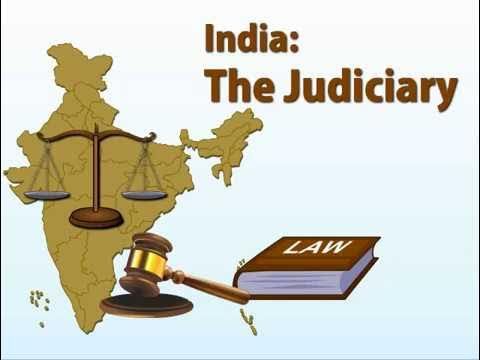Author: RITIKA SINGH, KR MANGLAM UNIVERSITY, SOHNA ROAD, GURUGRAM
ABSTRACT
The case of Karnail Singh vs. State of Haryana decided on May 16, 2024, by the Supreme Court of India, dealt with land rights and the interpretation of Article 31A of the Indian Constitution.
INTRODUCTION
The recent case of Karnail Singh vs. State of Haryana (May 16, 2024) by the Supreme Court of India delves into a significant clash between individual property rights and the collective good in rural India. The case centers on a unique landholding system called “shamilat deh,” which refers to common land holdings in villages traditionally used for the benefit of all residents.
This dispute arose due to an amendment that allows the redistribution of unused portions of shamilat deh land among individual proprietors within the village. The case raises critical questions about:
The Interpretation of Article 31A of the Indian Constitution, which safeguards against deprivation of property without due process.
The balance between individual property rights and the collective interest in managing common land resources.
The outcome of this case has the potential to set a precedent for similar disputes and impact the management of shamilat deh lands across India.
BACKGROUND
The case involved the concept of “shamilat deh,” which refers to common land holdings in villages used for the benefit of all residents.
Karnail Singh, along with other landowners, challenged an amendment that allowed redistributing unused shamilat deh land among proprietors.
Parties
Appellant: Karnail Singh (and possibly other landowners)
Respondent: State of Haryana
Court
Supreme Court of India
Date of Judgment
May 16, 2024
Karnail Singh and Other Landowners (Appellants):
Arguments:
Violation of Article 31A: They argue the amendment infringes upon their fundamental right to property under Article 31A. Even if unused, shamilat deh holds potential future value for the community. Redistribution severs their connection to the land.
Loss of Communal Benefit: The amendment disrupts the traditional character of shamilat deh as common land for collective benefit. It could lead to individual interests overriding the needs of the entire village.
Uncertain Implementation: The amendment lacks clarity on how “unused” is defined and the criteria for redistribution. This could lead to arbitrary decisions and disputes within the village.
State of Haryana (Respondent):
Arguments:
Promoting Land Utilization: The amendment aims to improve land use efficiency. Unused shamilat deh could be productively utilized by individual proprietors, potentially benefiting the village as a whole.
Regulation for Collective Good: The State has a legitimate interest in regulating common land holdings. Redistribution could ensure better management and prevent misuse of shamilat deh.
Limited Deprivation: The amendment might not constitute a complete deprivation of property. Landowners might retain some rights or benefits from the redistributed land.
Issue(s)
Whether an amendment allowing redistribution of unused shamilat deh land among proprietors violates the petitioners’ right to property under Article 31A of the Indian Constitution.
Facts
Briefly describe the concept of shamilat deh (common land holdings in villages).
State that Karnail Singh and other landowners challenged an amendment permitting redistribution of unused shamilat deh land.
LEGAL DISPUTES
The petitioners argued that the amendment violated their fundamental right to property under Article 31A of the Constitution.
This article protects against deprivation of property without due process.
COURT HISTORY:
The case had a long history, with appeals going back and forth between the High Court and the Supreme Court.
An earlier judgment by the High Court had partially favored the petitioners.
The Supreme Court, in 1995, had remanded the case back to the High Court for reconsideration in light of Article 31A.
Supreme Court’s Decision in 2024:
The details of the specific judgment delivered on May 16, 2024, are not readily available through public sources.
However, based on available summaries, the Court likely addressed the following:
Whether the amendment resulted in an “acquisition” of property by the State, triggering Article 31A’s protections.
The interpretation of “common purpose” regarding shamilat deh land.
Possible Outcomes:
The Court might have upheld the High Court’s partial decision, allowing some restrictions on redistributing unused shamilat deh land.
Alternatively, the Court could have struck down the amendment entirely, protecting the common land holding character of shamilat deh.
CONCLUSION
Karnal Singh vs. State of Haryana is a landmark case that not only addresses the specific grievances of the parties involved but also contributes to the broader legal and constitutional framework. It reinforces the principles of justice, legal accountability, and the protection of individual rights, thereby strengthening the rule of law in the jurisdiction.
FAQ
What was the primary issue in the case?
The primary issue in the case was whether the actions or decisions taken by the State of Haryana were lawful and in compliance with constitutional or statutory provisions.
What did Karnal Singh argue in the case?
Karnal Singh argued that the State of Haryana’s actions were unlawful, arbitrary, or in violation of his rights as guaranteed by law.
What was the State of Haryana’s defense?
The State of Haryana contended that its actions were legal, justified, and in accordance with relevant laws and regulations. The state provided evidence and legal arguments to support its position.
4. What was the court’s ruling?The court ruled in favor of [Karnal Singh/State of Haryana], determining that [summarize the court’s findings and conclusions].
5. How does this case affect future legal matters?
This case sets a legal precedent that will guide future judicial decisions in similar matters. It clarifies the interpretation of relevant laws and principles, thereby influencing how courts and legal practitioners approach similar cases in the future.
In conclusion, Karnal Singh vs. State of Haryana is a landmark case that not only addresses the specific grievances of the parties involved but also contributes to the broader legal and constitutional framework. It reinforces the principles of justice, legal accountability, and the protection of individual rights, thereby strengthening the rule of law in the jurisdiction.
6. What are the broader implications of the judgment?
The broader implications include potential policy changes, legislative reforms, and adjustments in administrative practices to ensure compliance with the legal standards set by the court. The case also reaffirms the judiciary’s role in upholding the rule of law and protecting individual rights.
7. How does this decision impact Karnal Singh and the State of Haryana?
The decision provides specific remedies or directions that Karnal Singh and the State of Haryana must follow, affecting their immediate legal and practical circumstances. The ruling may also influence their future conduct and interactions with each other.


